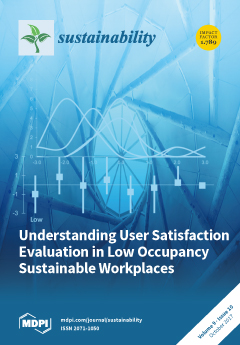Recent health threats from fine particles of PM
2.5 have been warned by various health organisations including the World Health Organisation (WHO) and other international governmental agencies. Due to the recognised threats of such particulate materials within urban areas, counter measures against PM
2.5 have been largely explored; however, the methods in the context of planting types and structures have been neglected. Therefore, this study investigated and analysed the concentration levels of PM
2.5 in roads, planting areas, and residential zones within urban areas. Moreover, the study attempted to identify any meaningful factors influencing the reduction of PM
2.5 and their efficiencies. After surveying PM
2.5 in winter and spring season, there were serious reductions of PM
2.5 concentrations within the areas of pedestrian paths, planting, and residential areas compared to other urban areas. In particular, a significant low level of PM
2.5 concentrations was shown in the residential areas located behind planting bands as green buffer. This research also found that three-dimensional volumes and quantity of planting rows play a critical role in reducing PM
2.5. A negative correlation was shown between the fluctuated concentration rate of PM
2.5 and quantity of planting rows—single row of trees showed fluctuated concentration rate of PM
2.5, 84.77%, followed by double rows of trees 79.49%, and triple rows of trees 75.02%. Especially, trees need to be planted at certain distance to allow wind to diffuse fine particles rather than dense planting. Finally, planting shrubs also significantly reduces the concentration level of PM
2.5—the fluctuated concentration rate of the single layer showed 88.79%, while the double layer and the multi-layer showed 81.16% and 68.93%, respectively—since it increases three-dimensional volume of urban plantings.
Full article





